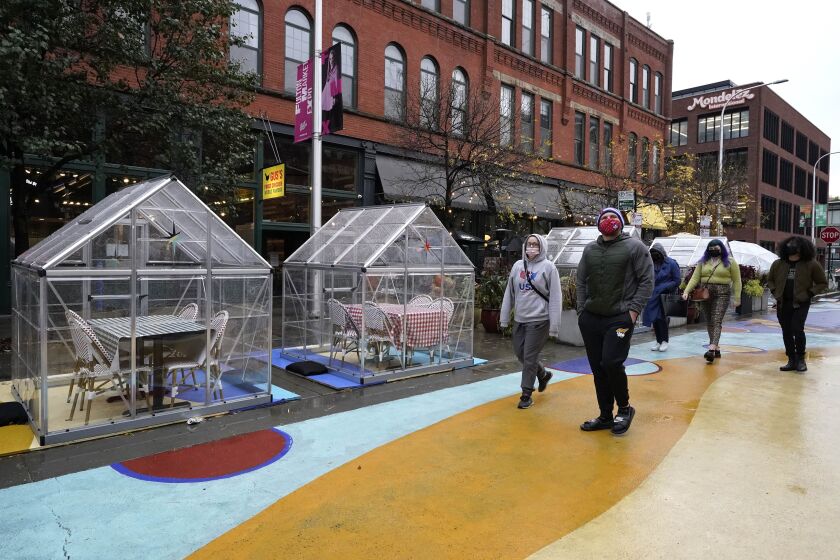Illinois recorded another 2,944 new confirmed and probable cases of COVID-19 and an additional 49 deaths as restaurants, bars and other businesses in 29 Downstate counties were cleared to reopen and two other regions near Chicago prepare to have restrictions eased.
As of Sunday night, 2,962 people with COVID-19 were in Illinois hospitals, with 601 patients in intensive care units and 302 on ventilators.
With case numbers and positivity rates in Illinois continuing a downward trend, Regions 8 (DuPage and Kane counties) and 9 (Lake and McHenry counties), are slated to move from Tier 2 to Tier 1 Tuesday, which would allow for bars and restaurants to go from no indoor service to having 25 guests or 25% capacity.
That trend also is allowing those 29 counties in two Downstate regions to move into the less-restrictive Phase 4. That change for Region 1 and Region 2 means many businesses, as well as museums, can reopen, effective immediately.
Restaurants and bars in those regions can allow indoor dining and drinking for parties up to 10 people, but tables should be spread out, keeping at least 6 feet between parties. Select indoor recreation facilities, such as bowling alleys and skating rinks, also can reopen.
Phase 4 will also allow for meetings and social events to take place again, with a maximum of 50 people or 50% of room capacity. Multiple groups can use the same facility if they are socially distanced and in separate rooms.
Museums also can open, though limited to 25% capacity.
Phase 4 will also allow for meetings and social events to take place again, with a maximum of 50 people or 50% of room capacity. Multiple groups can also gather in the same facility if they are socially distanced and in separate rooms.
Region 1, in the northwestern corner of the state, includes nine counties: Boone, Carroll, DeKalb, Jo Daviess, Lee, Ogle, Stephenson, Whiteside, and Winnebago. Region 2, just south of there, covers part of west-central Illinois, stretching south just past Peoria. It includes 20 counties: Bureau, Fulton, Grundy, Henderson, Henry, Kendall, Knox, La Salle, Livingston, Marshall, McDonough, McLean, Mercer, Peoria, Putnam, Rock Island, Stark, Tazewell, Warren and Woodford.
Moving from Tier 1 to Phase 4 means a region’s test positivity rate is equal to or less than 6.5% and ICU bed availability is greater than or equal to 20% for three consecutive days. It also means a region hasn’t experienced an increase of COVID patients in hospitals.
A region can move from Tier 2 to Tier 1 if their test positivity rate falls between 6.5% and 8% and staffed beds in intensive care units exceed or are equal to 20% for three consecutive days. There must also be no sustained increase in COVID-19 patients in the hospital.





